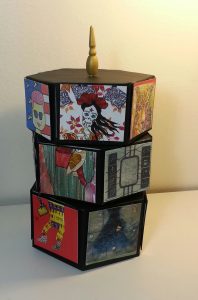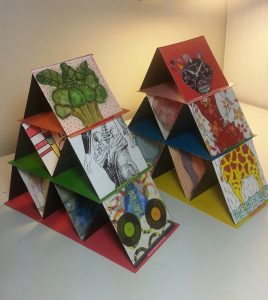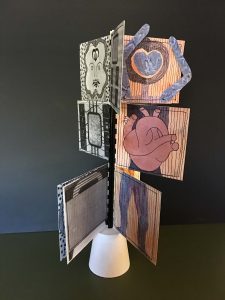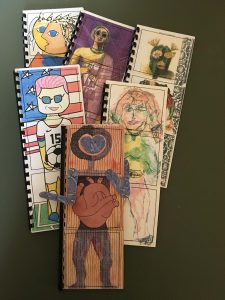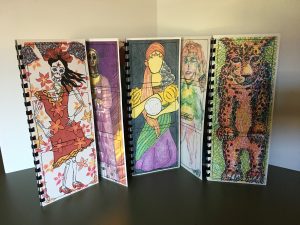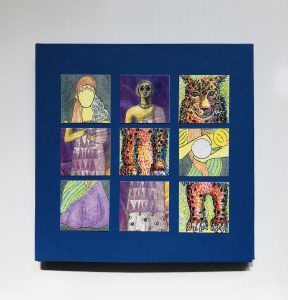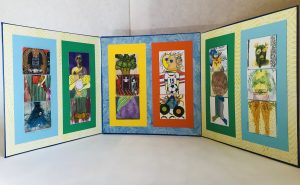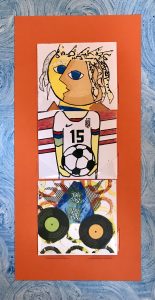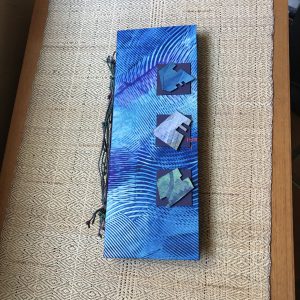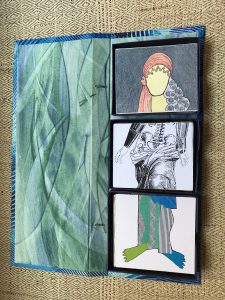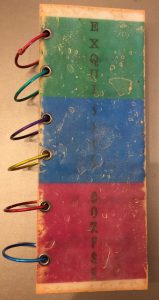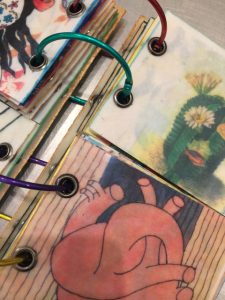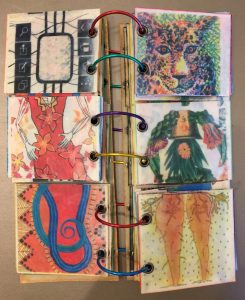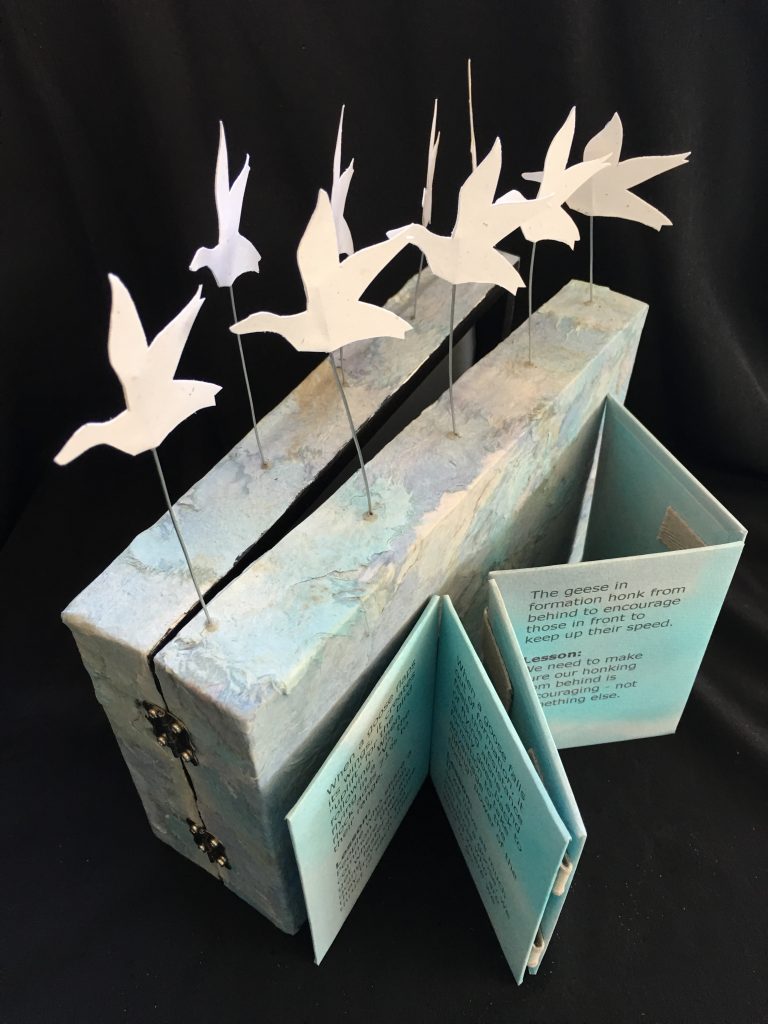A Collaborative Project undertaken by five Tucson Artists
The original exquisite corpse concept was formulated by DaDa writers and artists in the 1920’s using unrelated “fragments” of words or images to create new work. The New York Museum of Modern Art had an exhibit of exquisite corpses in 2018. Much of the work on exhibit came from those early writers and visual artists.
The Tucson Project
In the spring of 2018 six Tucson artists formed a study group to explore the exquisite corpse. Our goal was to play” with themes and formats using images created by the group members to see what happened.
We started the project by creating by creating images that were 4.25 x 8.5” (half a sheet of standard copy paper). Each image had three segments and common “connecting points” so that there could be continuity. We met once a month from May through September. Each of us produced 4 unique images informed by basic themes agreed upon at our meetings. Our themes were: the human body, creatures found in nature, bodies with an ethnic theme and imaginary bodies inspired by technology.
Each month we would distribute color copies of our image to the group. By September our image banks included a total of 24 images. We shifted our focus to how we would present our images in a creative fashion. The traditional exquisite corpse books often utilized accordion spines or three-part pages. Our goal was to develop non-traditional ways of presenting the work. The finished pieces were shown at the October PaperWorks meeting.
The Participants
Elizabeth Brizard, Mabel Dean, Vicki Donkersley, Terry Enfield, Sherrie Posternak.
All are members of PaperWorks – the Sonoran Collective for Paper and Book Artists (www.paperworks.info ).
Elizabeth Brizard is a mixed media artist with a technology and teaching background. She has a unique capacity for thinking “outside the box”. She was inspired by her naturally playful nature and a spinning top known as a dreidel. Her exquisite corpse is a re-interpretation of the dreidel All of her cards are mounted and form a deck of cards calling for exploration. They can be attached to the dreidel. But they can also be assembled in unique “house-of-cards” structures.
Mabel Dean is a mixed media artist who took on the challenge of using the images to create individual families from each artists’ illustrations. Her attempt to produce a vertical figure with movable segments was only semi successful. She was unable to provide enough stability to rotate the body parts on the stand.
Her second attempt resulted in five stand-alone in books using the four images produced by the participating artist. Each booklet became a ‘family”. The body part pages are turned to create unique figures.
Vicki Donkersley known for her charming collage work approached the final challenge presentation by creating a game. She formed a triptych (three panels hinged together) to act as the game board. She reduced the size of the original artwork and cut them into 2” x 2” “game tiles”. Next she fabricated clear plastic corner “holders” on the card stock pages so the tiles can be easily inserted or removed, while being securely held in place as well.
The front and backs of the tiles feature different images so you can take out a tile, turn it over, and completely change the figure. When the tiles are moved around from figure to figure, they provide multiple variations, some are quite comical. Twenty-four tiles can be in use at a time.
Terry Enfield was first recognized by the Tucson art community as a textile artist and doll maker. In recent years she has become known for her unique polymer clay and metal art jewelry. One could say she is a mixed media art explorer as she continues to study many different formats for creative expression.
Her corpses were informed by her experience in working with form and stitch. She transformed her images into fine cards and made a custom three part box to display them. The three stacks of images represent the heads, torsos and legs of all 24 images. Body parts are easily rearranged. Her piece is a unique table-top invitation to touch and explore.
Sherrie Posternak Sherrie Posternak is well known for her encaustic and mixed media artwork. For this project she scanned each of the images and printed them on sumi paper. The images were mounted on a polyester/nylon spun fiber paper called Encaustiflex, using encaustic wax medium as the glue, saturating both the sumi and the Encaustiflex until each page became one complete unit. The covers are cotton quilt batting and sumi paper also saturated with encaustic medium. Bright binder rings hold the book together.
